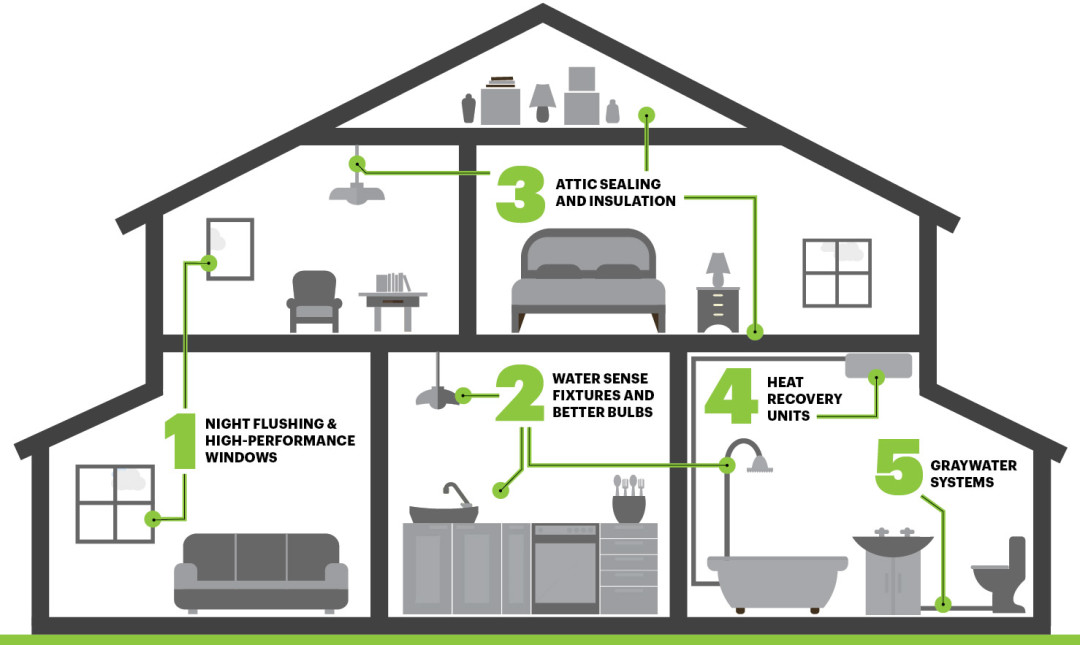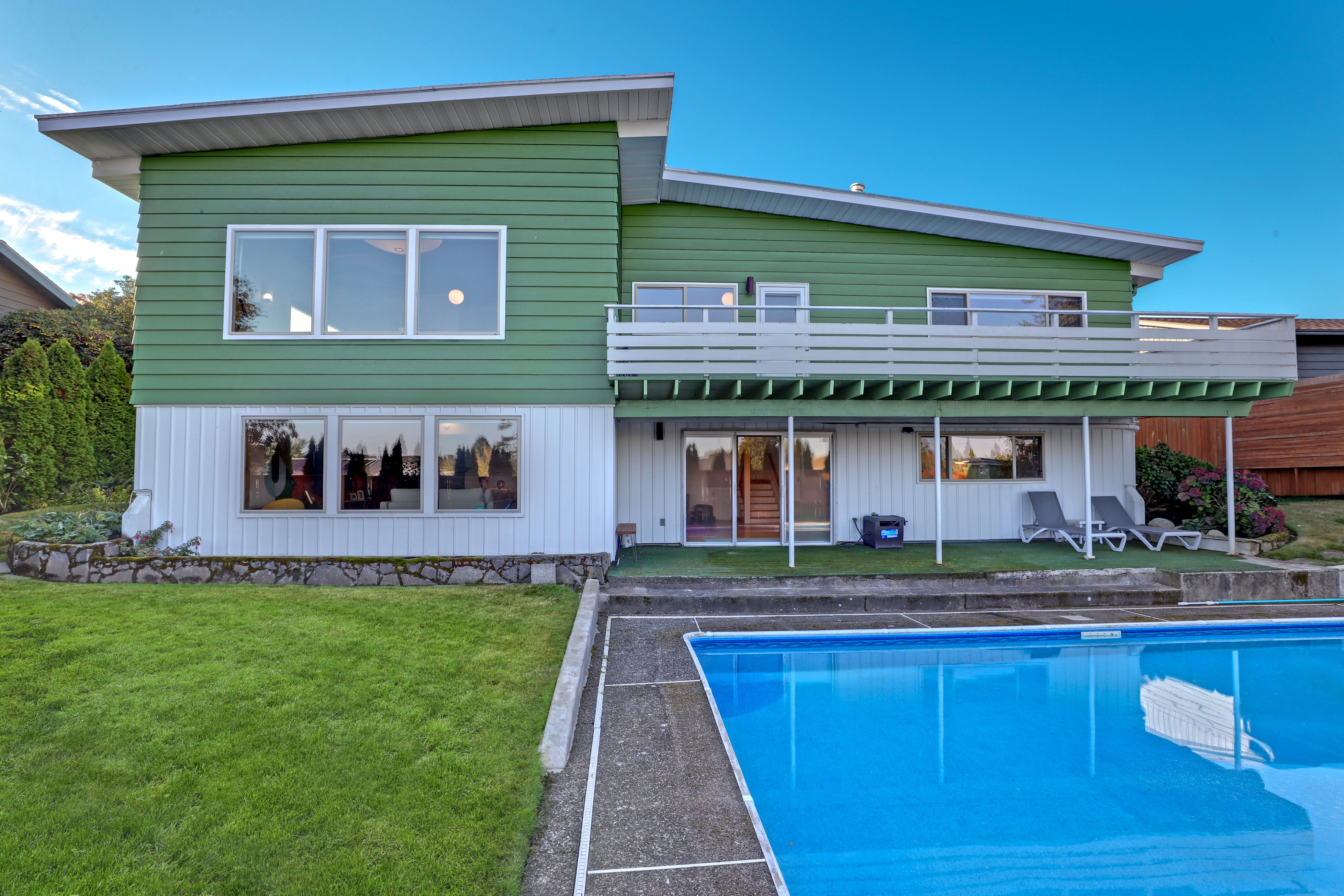5 Steps to Transform Your Home into an Eco-Friendly Abode
Maybe you want to live an environmentally responsible life—or maybe you just want to cut your utility bills. Whatever your motivation, there are myriad ways to go greener, from quick DIY fixes to elaborate remodels. We checked in with Stephen Aiguier, founder of the sustainable design-build company Green Hammer (see p. 58), and Energy Trust of Oregon’s Lizzie Rubado to gather tips for your home.

Image: Jen Wick
1. WINDOWS
Night flushing during hot summer months—opening windows at night, closing them and drawing the shades in the morning—is a cost-free way to cool down your house. On the spendier side, upgrade to high-performance, energy-efficient windows with a low U-value (or heat-transfer rate). Also consider casement or tilt-and-turn models, which can be fully and more easily opened, allowing for greater airflow.
2. MATERIALS & FIXTURES
Energy efficiency is as much about how you use your home as what it’s made of. If you renovate a bathroom or kitchen, opt for Water Sense–certified fixtures. Energy Trust posits that changing just one showerhead to a Water Sense model can save up to $50 a year on energy and water costs. Meanwhile, CFLs and LEDs use up to 80 percent less energy than incandescents. For wooden fixtures, FSC-certified woods from local sources, like Sustainable Northwest Wood, will also steer you to a lower carbon footprint.
3. AIR SEALING
During colder months, heat escapes easily through gaps and cracks in your home. According to Rubado: “All those little gaps and cracks are the equivalent of leaving a window open all winter long.” On the DIY side, fit your own gaskets and weatherizing strips to windows and exterior doors, and seal accessible attic spaces with expanding foam applied around light fixtures. Or have your walls, attics, and floors professionally insulated to minimize heating and cooling costs.
4. HEAT RECOVERY
Heat recovery systems harness existing energy in your home and maximize its benefits. Essentially, the systems replace bathroom fans with a ventilation system that extracts warm air from the bathroom, filters it, and uses it to maintain heat in bedrooms and living spaces. Because 18 percent of the energy used in the average home is used for heating water, it also pays to think about heat recovery units in the bathroom. They can be stored off the shower drain, passively heating cold water with warm water that drains.
5. GRAYWATER
According to the EPA, toilets account for some 25 percent of an average family’s water usage—too much. One solution is “graywatering,” or reusing water. An easy (if odd) step is to collect water in a bucket as you shower, and then use it for flushing. Take it up a notch by installing a Sloan AQUS Greywater System, which will collect water draining from your bathroom sink and channel it to the toilet.




